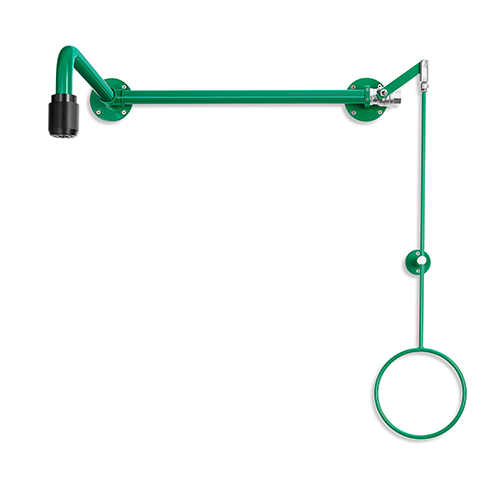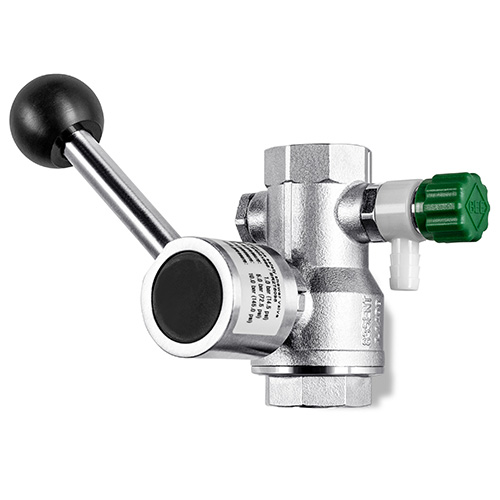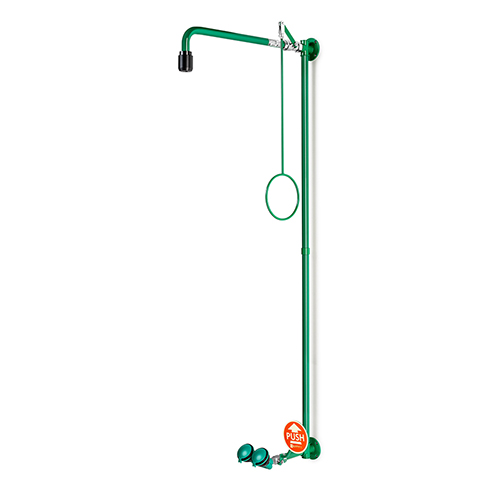Safety showers
What is an safety showers?
Safety showers are mandatory first aid facilities for workplaces where employees may come into contact with hazardous substances, acids, alkalis, heat, flames and also extreme dirt. Emergency showers are used to extinguish and decontaminate people after accidents.
Which standards and guidelines apply to Emergency showers?
Emergency showers in Europe must comply with EN 15154-1:2006 (Body showers in laboratories) and EN 15154-5:2019 (Body showers for locations other than laboratories / replacement for DIN 12899-3:2009). In the U.S., ANSI Z358.1-2014 also applies to emergency showers. Further national standards may have to be observed. In addition, company standards may need to be considered when selecting an eye shower or safety shower.
What volume flow is required for an emergency shower?
ANSI Z358.1-2014 requires a minimum flow rate of 75 liters / minute or 20 GPM for all body safety showers. In comparison, EN 15154-5:2019 defines hazard classes I, II and III and assigns volume flows of 30-60, 60-100 and more than 100 litres / minute to them. B-SAFETY body safety showers have different volume flows depending on the hazard class. In the laboratory sector, for example, a volume flow of 50 litres / minute has become established. In industry, a volume flow of 75 litres / minute has proven to be effective, as the quantities of hazardous substances are sometimes much higher.
What should be considered when choosing the right safety shower?
Specific requirements for safety showers are derived from the risk assessment for your site. The number of emergency showers required can also be determined from this. It is possible that the company’s own standards must be taken into account.
Safety data sheets for the hazardous substances used usually provide further information to identify the chemical risk and the consequential hazards. They provide information on recommended decontamination procedures required for the chemicals in question in the event of an incident or skin contact. For example, if ammonia comes into contact with the skin, the affected area must be rinsed with warm water at 25°C to 30°C for at least 15 minutes.
What should be considered when choosing a location for an safety shower?
In general, safety showers must be installed as close as possible to the hazardous workplace. Choose a location that can be reached quickly from the hazardous areas. Access to the shower must be kept clear at all times. The area around the shower must always be well lit – even in the event of a power failure. The shower itself must be marked by signs that are clearly visible from all sides.
When considering a possible location for an eye shower or safety shower, the following aspects should be considered:
- What is the ambient temperature at the planned location?
- Is there a possibility to collect potentially contaminated water?
- Is a safe water supply available at sufficient line pressure?
- Is the shower to be installed in a potentially explosive area?
- Have you considered electrical requirements such as ATEX?
- Can the shower be disabled for maintenance?
When using the safety shower, no consequential damage should be caused by escaping water. If necessary, the escaping shower water must be safely drained off with enclosures and catch basins.
Read more at https://www.b-safety.com/en/faq/
















